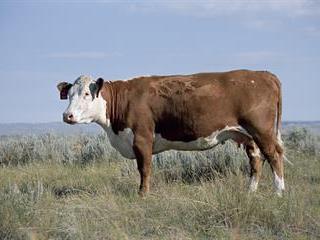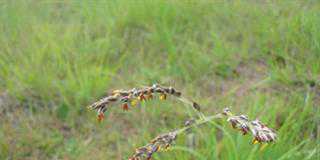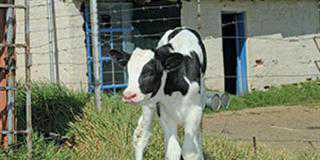
DNA is found in the cells of organisms. It is responsible for the transmission of hereditary characteristics from one generation to the next and is thus the ‘blueprint’ of the organism. Genetics is the science of this process, and genomics, a branch of genetics, deals specifically with the sequence of chemical bases in DNA that defines this blueprint.
Genomics in cattle breeding
Genomics was initially focused on humans, but is being applied more and more to the breeding of livestock. DNA, together with the environment, dictates how an animal will perform.
Earlier this year, progress on the 1 000 Bulls Genome Project was made public. An international collaborative research initiative, the project aims to use the DNA sequence of cattle as a selection tool in breeding for a variety of traits. In short, genomics will help farmers fast-track genetic progress within a herd, enhancing their ability to remain competitive.
This is not to say that genomics is the silver bullet for all breeding difficulties; it complements existing technologies. In fact, performance test data and pedigree information form the basis for genomic breeding values. To fully appreciate the benefits and potential applications of genomics in the beef industry, it is important to understand how the science developed.
The beginnings
First isolated in human pus by Swiss physician Friedrich Miescher in 1869, deoxyribonucleic acid (DNA) is a molecule that encodes the genetic instructions used in the development and functioning of all known living organisms.
For many years, scientists discussed the potential applications should the code be deciphered. Then came the remarkable Human Genome Project (HGP). Beginning in 1990 and declared complete in 2003, it aimed to determine the sequence of chemical base pairs that make up human DNA. It also sought to identify and map all of the genes of the human genome.
The benefits of the HGP are already being reaped. For example, it has been found that people with certain DNA sequences run a higher risk of developing diseases such as cancer and diabetes. This has enabled physicians to design ‘personalised’ treatment regimes, based on the particular individual’s DNA sequence, the so-called DNA code.
The ABC of DNA
The DNA code consists of four chemical bases – guanine (G), adenine (A), thymine (T) and cytosine (C) – in a given sequence such as AACGTTCGA… approximately three billion letters in length. All individuals (except identical twins) have a unique DNA sequence.
Surprisingly, though, 99,9% of the human DNA code is identical in everyone. In addition, only about 3% of our DNA code consists of genes (of which we have about 25 000). Simply put, these sequences are responsible for various traits, from eye colour to susceptibility to certain diseases to whether we are, say, double-muscled.
What about those differences? A DNA sequence variation occurring commonly within a population is referred to as single nucleotide polymorphism (SNP). This is currently being studied to establish levels of genetic variation and determine which differences are associated with which traits.
Animals
An SNP can have a major effect. For example, it can render an animal susceptible to stress if it occurs in a particular gene.
Larger sequence differences such as ‘insertions’ and ‘deletions’ are also found, which in many cases have catastrophic consequences. Chondrodysplasia or ‘bulldog calf syndrome’, for example, results from a few letters missing (deletions) in the animal’s DNA code.
Inheriting the code
One of the most important aspects of genetics when it comes to breeding and selection is how the DNA code is inherited.Exactly 50% of the DNA of each parent is passed on to the offspring. This principle is central to the farmer’s ability to select for certain traits over generations.
DNA technology is also used in the cattle industry, inter alia, for the identification of individual animals and parentage verification. In many cases, it is a prerequisite for registration of the birth. Accurate pedigree information, as verified by DNA tests, in turn forms the basis for estimating accurate breeding values.
New possibilities
Conventional selection methods are not that effective when it comes to certain characteristics. These include those that are expensive to measure (such as feed intake), that can only be measured at an advanced stage of an animal’s life (adult weight) or measured directly in one sex (milk production).
Moreover, it is difficult to select for low heritable traits such as fertility; the pace of genetic improvement for these traits is relatively slow as a rule.
This is where genomics shows much promise – it can help farmers to become more effective, enabling accelerated genetic progress. After all, it’s not only important to predict accurately how an animal will perform. It it will also be extremely advantageous to make this prediction as early as possible. This will result in significant cost savings as progeny testing, which forms part of conventional testing schemes, is expensive and time-consuming.
The benefits of genomics have already been demonstrated for dairy cattle, where accurate genomic breeding values have been generated for young bulls. The difficulty lies in identifying the DNA sequences directly associated with the traits of interest and using this information to develop models and tests to quantify the traits. It all comes down to being able to select for animals with ‘favourable’ DNA sequences, while eliminating animals with ‘unfavourable’ sequences.
Several weapons in the arsenal
As already mentioned, genomics cannot solve all breeding difficulties. Equally important are the accurate performance records of an animal, the number of its relatives that have been performance tested, the heritability of the specific traits in question, and the type of trait in question.
To iterate, genomics complements existing technologies and will not replace systems such as performance testing. This is important to understand if we are to promote the more widespread implementation of genomics. At the same time, we need to highlight its recent successes and the benefits attached to its implementation.
From a practical point of view, the first step in implementing genomics is to create a reference population that will be used to develop models and equations that quantify the association between performance and DNA sequence (or genotype).
This reference population should have comprehensive performance records and accurate pedigree information. In terms of numbers, a good start is a population of 1 000 animals.
Step two is to analyse or type these animals for their DNA sequences (or SNPs) and determine the association between their performance records and their DNA sequences through statistical and mathematical formulae. Once this has been done, we need to verify how well the prediction equations work; this will be done on a test population that ideally contains animals related to the reference population.
ARC and Genomics
If the models can predict performance satisfactorily in the test population, we can proceed to calculate genomic breeding values for our animals, once they have been genotyped (or SNP-typed). Research is also focusing on methods and approaches to accommodate crossbred animals.
This is done by investigating the effects of combining different breeds in a reference population. The latter is also a way of accommodating animals for breeds for which low numbers of performance records are available. The ARC plays a leading role in exploiting genomics to benefit the industry. As a member of the Livestock Genomics Consortium, the ARC have taken hands with industry to identify, prioritise and eventually address the needs of our country in this regard.
The ARC is in a favourable position, as it boasts a state-of-the-art biotechnology platform at Onderstepoort. This is ideally suited to engage in genomics research and host a large team of expert researchers, some of whom are already looking at genomic studies on a variety of livestock species, including cattle.
Email Dr Ben Greyling at [email protected]
This article was originally published in the 19 & 26 December 2014 issue of Farmers Weekly.













